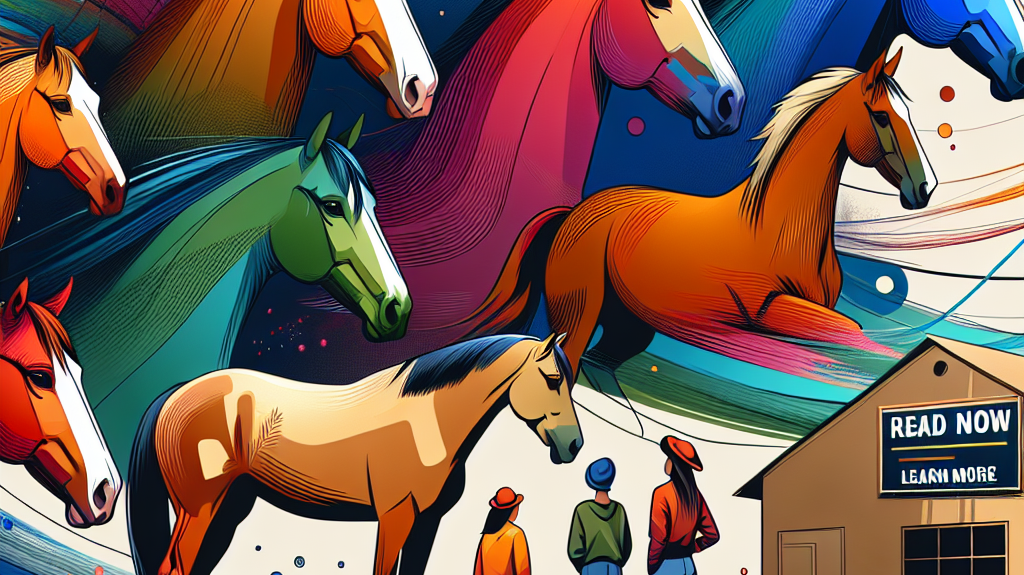The Art of "Horse Maths": How Equestrians Justify Their Expensive Hobby
In the enchanting world of horse enthusiasts, there's an amusing phenomenon known as "horse maths"—a creative and sometimes whimsical way to rationalize the hefty expenses associated with owning and caring for horses. This concept was humorously explored in an article titled "17 ways horse maths gets us out of trouble every time" published on Horse & Hound.
What is "Horse Maths"?
"Horse maths" is a humorous financial logic that equestrians use to justify their costly hobby. For instance, owning multiple horses of the same color is jokingly equated to owning just one, downplaying the multiplicity of expenses. It's a relatable mechanism for those entrenched in the equestrian lifestyle, providing a lighthearted take on the promise of financial rationalization.
Resourceful Justifications and Cost-Per-Use Rationalizations
One of the most prevalent forms of "horse maths" is the cost-per-use rationalization. Take a saddle, for example. While its initial cost may be high, breaking it down into minimal daily use over several years can make it appear more economical. This playful financial gymnastics allows horse owners to feel better about their investments.
Equestrians also perceive the time spent with their horses as equivalent to savings on therapy sessions, as horseback riding provides immense psychological benefits. Buying new gear might seem like a splurge, but avoiding shipping fees by purchasing in bulk is seen as getting something for free.
Economic Impact and Financial Challenges
On a more serious note, "horse maths" indirectly highlights the economic impact of the equestrian sports industry. Globally, millions of people are involved in horse riding, breeding, and training, contributing significantly to worldwide economies. However, these financial justifications reveal the substantial monetary challenges faced by enthusiasts, making "horse maths" a coping mechanism.
The Community Aspect and Engaging Scenarios
The article effectively engages its readers through playful and relatable scenarios that reflect the lives of horse owners. Consider the phenomenon where time seems to stretch while at the yard. Horse owners humorously claim to manipulate time, making their extensive hours spent caring for the horses feel justified. This sense of camaraderie is further enhanced as the article invites readers to share more "horse maths" examples, fostering a curious and connected community.
DIY Economy and Resourceful Practices
Horse owners often partake in a DIY economy—buying expensive new items with plans to sell old ones or mending tack with baler twine. This resourcefulness is a testament to the practicality derived from "horse maths." A clever practice seen among equestrians is the frequent purchase and storage of headcollars, lead ropes, and hoof picks due to their tendency to get lost. This practice also contributes to economic activities related to the equestrian sector.
Mental and Physical Benefits of Horse Riding
A key aspect often highlighted in "horse maths" is the mental and physical benefits of horse riding. Horseback riding serves as both physical exercise and psychological therapy, emphasizing the importance of investing in this industry not only for economic gains but also for the overall well-being of those involved. Time spent riding is often equated to time saved on potential therapy sessions, reflecting a holistic approach to wellness.
Competitions and Training Value
Another justification within "horse maths" lies in the value of training and competitions. While the cost of training might be considerable, the satisfaction and worth of winning competitions, achieving rosettes, and personal accomplishments are seen as invaluable returns. These sentiments validate equestrians' continued investments, ensuring both monetary value and personal fulfillment.
Conclusion
In conclusion, "horse maths" serves as a creative and humorous way for equestrians to rationalize their expenses and commitments. Though lighthearted, it raises important questions about the economic impact of equestrian sports and the financial challenges faced by those involved. By dissecting their whimsical financial rationalizations, we gain insight into a dedicated community continually justifying their expensive passion with both humor and logic.
For further insights and a deeper dive into the economic implications and benefits of equestrian practices, check out the original article on Horse & Hound.




